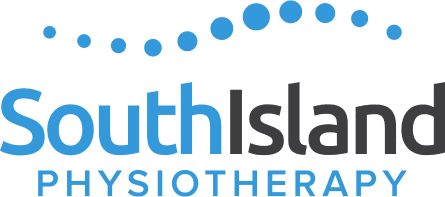Dry Needling vs. Acupuncture: Key Differences, Similarities, and When Each Works Best
If you’ve been dealing with musculoskeletal pain, chronic tightness, or stubborn trigger points, you’ve probably heard of dry needling vs acupuncture debates. Both therapies insert needles into specific areas of the body to promote relief from pain, improve range of motion, and enhance recovery. But while they look similar at first glance, the key differences between dry needling and acupuncture lie in their history, intent, and evidence base.
This post will explore the distinctions between dry needling and acupuncture, what the research says about each, and how to decide which may be right for your injury or condition.
What’s the Difference Between Dry Needling and Acupuncture?
At a glance, both methods use thin needles to stimulate the body—but their philosophies and goals are distinct.
- Dry needling is a modern Western medical technique.
- Dry needling is a technique often performed by physical and sports injury therapists or physiotherapists.
- It focuses on inserting filiform needles directly into myofascial trigger points—tight bands of muscle that contribute to pain, stiffness, or movement restriction.
- Dry needling treatment is part of a broader physical therapy approach, often combined with exercise and education.
- Acupuncture is based in traditional Chinese medicine.
- Acupuncture involves inserting acupuncture needles into meridians and energy points believed to influence the body’s flow of “qi.”
- In the West, the use of acupuncture has expanded, and it is now widely studied for pain management, chronic pain, and systemic conditions.
- An acupuncture session is performed by physical therapists in some states but most often by a licensed acupuncturist, certified by the National Certification Commission for Acupuncture and Oriental Medicine (NCCAOM) or similar bodies.
So, dry needling and acupuncture involve very similar needles used, but their intent differs: dry needling treats muscles and trigger points, while acupuncture treats musculoskeletal pain and other conditions through meridian theory.
Needling Techniques: How They Work
- In point dry needling, a needle is inserted directly into a trigger point, sometimes producing a local twitch response.
- Non-trigger point dry needling places needles into specific points around the painful region to restore movement and blood flow.
- Acupuncture and dry needling also differ in the type of needle: both use filiform needles, but acupuncture is performed with different patterns, depth, and locations depending on diagnosis within acupuncture and oriental medicine.
While both needles are used to stimulate tissue, acupuncture may aim to restore energetic balance, whereas dry needling is based on neuromuscular and biomechanical models.
The Evidence: Does It Work?
Evidence for Dry Needling
Research shows that:
- Dry needling can help reduce muscle tension and improve pain and movement issues associated with back pain, neck pain, and sports injuries.
- Meta-analyses suggest that dry needling is more effective than sham treatments for short-term pain relief and improving range of motion.
- However, the effectiveness of dry needling may depend on combining it with part of a broader physical rehabilitation plan.
The American Physical Therapy Association considers dry needling a safe and useful adjunct when performed by physical therapists who are trained and licensed in states that allow physical therapists to perform dry needling.
Evidence for Acupuncture
Studies show that:
- Acupuncture works for chronic pain, particularly acupuncture for osteoarthritis, migraines, and back pain.
- Clinical trials find benefits of acupuncture compared to sham acupuncture, though the effect sizes can be modest.
- The groups for acupuncture worldwide point to its role in reducing reliance on opioids and other drugs for pain management.
- Potential risks of acupuncture are low but may include bruising, dizziness, or infection if not properly sterilized.
Overall, both therapies provide measurable relief from pain, though high-quality studies suggest results are strongest when combined with movement-based rehabilitation.
Which Should You Choose?
When deciding between acupuncture or dry needling, consider your goals:
- Choose dry needling if you’re looking for direct treatment of trigger point-related muscle pain, tightness, or local movement restriction. A dry needling session is often performed by physical therapists and paired with rehab exercises. Dry needling may help athletes and those with sports injuries in particular.
- Choose acupuncture if you want a holistic approach to reduce pain, manage chronic pain, or address systemic concerns alongside pain and muscle tension. Acupuncture currently has broader recognition for conditions like migraines, stress, and acupuncture to reduce osteoarthritis symptoms.
Final Thoughts
So, dry needling vs acupuncture isn’t about which is “better,” but which fits your needs. If you’re looking for relief from pain and movement issues associated with sports injuries or musculoskeletal pain, dry needling is also a strong option—especially when used as part of a larger pain management plan with physical therapy.
Meanwhile, acupuncture is practiced by tens of thousands worldwide, and acupuncture may be the right choice if you prefer a whole-body approach rooted in traditional Chinese medicine.
Both therapies insert needles into specific sites, but their philosophies differ. By understanding the difference between dry needling and acupuncture, you can choose wisely—or even benefit from both.
At South Island Physiotherapy, we believe that pain relief should be more than temporary. It should set the stage for lasting strength and movement. Whether through dry needling, acupuncture, or a tailored rehabilitation plan, our goal is to help you recover, move freely, and feel your best.
If you’re curious about which treatment is right for you, book a consult with a physiotherapist today. Together, we’ll design a plan that supports your recovery and keeps you moving with confidence.

